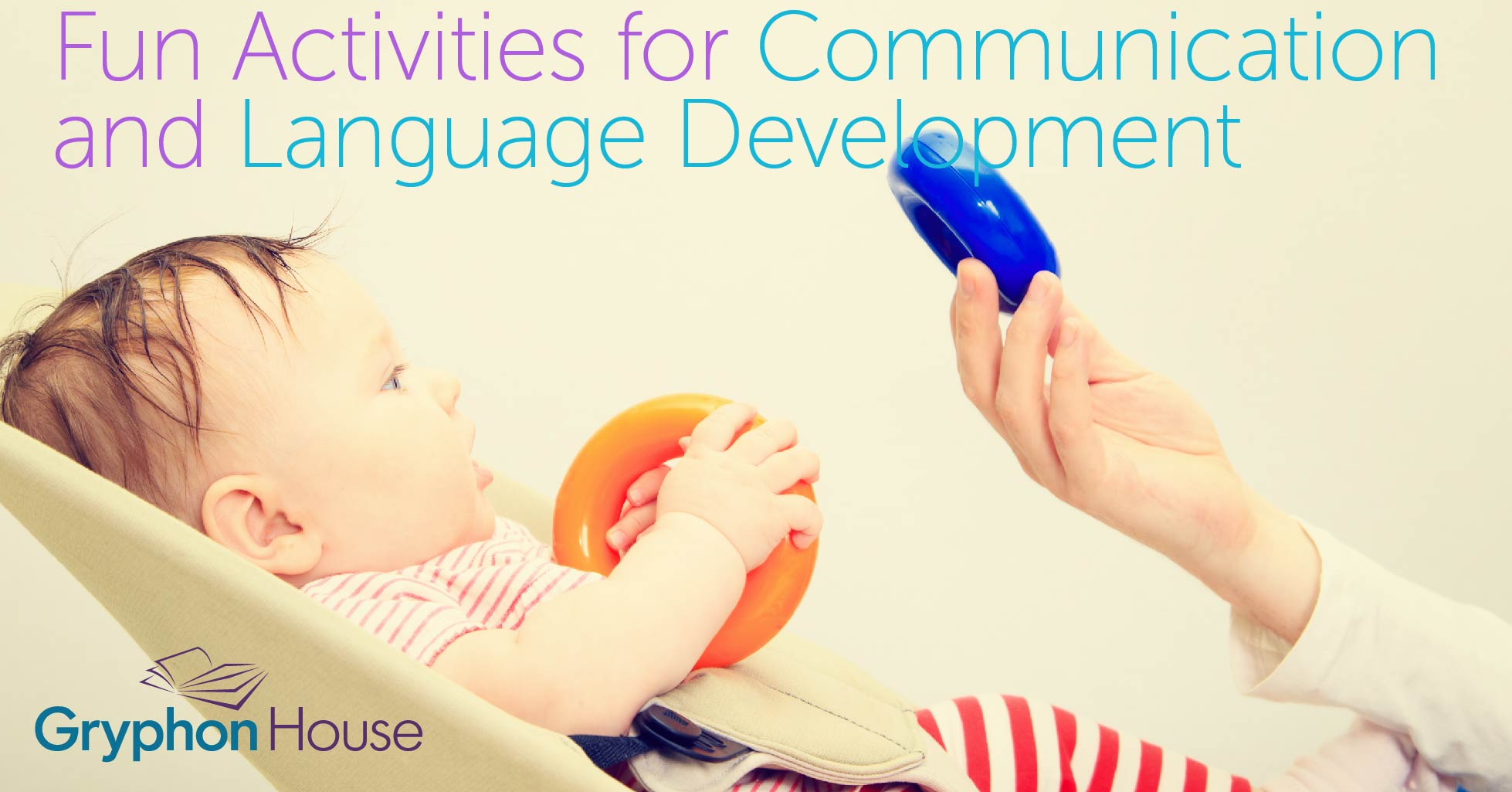Kids love to talk! Almost as soon as a child opens their eyes, they begin expressing themselves through sound. Though it may start out as “baby talk,” every cry and coo helps build language development in children. Adults contribute to speech development too; babies like hearing adults talk almost as much as themselves! Parents and educators contribute to speech development in children by repeating words, telling stories, and simply talking to their children.
Kids love to talk! Almost as soon as a child opens their eyes, they begin expressing themselves through sound. Though it may start out as “baby talk,” every cry and coo helps build language development in children. Adults contribute to speech development too; babies like hearing adults talk almost as much as themselves! Parents and educators contribute to speech development in children by repeating words, telling stories, and simply talking to their children.
Of course, language doesn’t start in full sentences. In the first two years of life, children have to learn to recognize words, connect them to objects, and then use different words together to make a sentence. This is where speech development games come in! Below are a few different speech games from Renate Zangl’s Raising a Talker that you can use to help your child learn their language even quicker!
A Duck, Another Duck (12-18 months)
Goals
- Help children recognize and understand common words
- Help children generalize words
Materials
- A large box or bag
- 3 to 5 ducks in various colors and sizes
What to Do
- Put all the ducks in the box or bag
- Introduce the mysterious box/bag to the child. Get their attention by shaking it to make a sound and saying “Look!” in an excited, enthusiastic voice.
- Pull out the first duck and show it to the child, continually talking about it and repeating the word duck. Ex.: “Oh, look at the duck! Do you see the duck? What color is the duck? Is the duck green? Say hello to the green duck.”
- When the child loses interest in the duck, pull out another duck. Use a similar process of repeating the word duck, but this time, add comparisons of the two ducks. Ex.: “Oh, a new duck! Now we have two ducks! See, a big duck and a little duck. Do you want to hold the big duck?”
- After a few minutes, add the child what the object is called. They may not say duck—(or something similar)—in which case answer for them. If they do say something like duck, make sure to act excited and praise them!
- Continue this process until all the ducks are out of the box. Once all the ducks have been taken out, play with them until the child loses interest
- At the end of the game, place each duck back into the box, but continue to repeat the word. Ex.: “Goodbye, big duck. Goodnight little duck. Goodnight blue duck…”
Is the Cup for Digging? (18-24 months)
Goals
- Begin to introduce grammar by using –ing on verbs, using self-narrative, and speaking in full sentences that include articles and pronouns
- Relate objects and actions
Materials
- Tools like a hairbrush, a toothbrush, a cup, or a sock
- A paper bag
- A puppet (optional)
What to Do
- Put the tools in the bag
- Introduce the bag and the puppet (if one is used). Have the puppet pull out one of the tools, like a hairbrush, and ask “What is this? Is this a cup?” If the child doesn’t answer, model by saying “No, this isn’t a cup. This is a brush!” Continue this theme by pulling another object from the bag and saying something like “Oh, I found a pillow! What’s it for? Is it for brushing my hair?” What for the child’s answer.
- Continue this pattern, pulling out items and giving them the wrong names or jobs so that the child will correct you. If they don’t understand the game at first, help them by giving them the answers until they can give them on their own.
Stories about Numbers and Animals (24 months & up)
Goals
- Help children learn numbers, quantities, and color words
- Teach children about story structures
- Encourages children to name animals
- Introduces cardinal numbers like one and two
Materials
- 4 to 6 toy animals
- A pillow
- A box
What to Do
- Set out five different animals on the floor, along with the pillow to use as a bench
- Begin to tell a story using the materials you have like this: “One morning, the little turtle went for a walk. He got tired. He sat down on the bench.” Encourage the child to place the correct animal on the bench.
- Continue the story: “One lonely little turtle is sitting on the bench”—(hold up one finger to indicate the number)—“How many animals are sitting on the bench? Just one—one little turtle!”
- Continue the story by adding another animal: “Then a hippo comes by and says, ‘Good morning! I want to sit with you. Move over, move over, and let me on the bench!” Encourage the child to put the new animal on the bench.
- Continue the story in this manner. Each time another animal joins the bench, say how many animals there are and hold up the correct number of fingers. Touch the animals as you count them and encourage the child to do the same.
- Remember to emphasize the number words and animal names, and repeat them so that the child learns them. For example: “There are three animals—one, two, three! There’s a turtle, and a hippo, and a cat. Three animals!”
- When all the animals are on the bench, ask the child to name each one as you point at them. Then help all the animals hop back into their box

